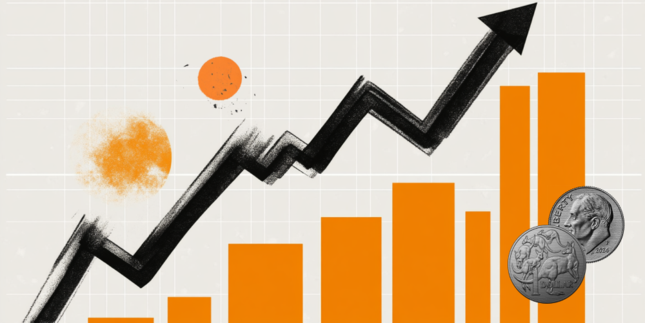- Pair inches up after dipping to the 0.6220 zone on Tuesday.
- Trump’s hinted tariffs on China weigh on risk assets, tempering AUD gains.
- RBA is likely to cut rates in February, keeping the Aussie on the defensive.
The Australian Dollar (AUD) mildly rose to 0.6270 on Tuesday, recovering after briefly falling near 0.6220 when United States (US) President Donald Trump reiterated plans to impose tariffs on China. Although the Reserve Bank of Australia (RBA) is widely expected to initiate a rate cut in February, the currency found modest footing in a calmer market atmosphere. Investors, however, remain cautious as the US Dollar (USD) climbs on revived tariff concerns.
Daily digest market movers: Aussie recovers mainly as markets await US tariffs directions
- In the wake of President Trump’s inauguration, the administration directed agencies to probe ongoing trade imbalances and currency manipulation, especially targeting China, Canada and Mexico.
- Despite uncertainties over Trump’s early trade agenda, a softer US Dollar provided a lift to stock markets in Europe and the US, as well as risk-driven currencies such as the Aussie.
- The CME FedWatch tool suggests a 55.6% chance the Federal Reserve (Fed) will hold rates steady at its May gathering, with rising chatter about a potential rate decrease by June.
- US 10-year yields hover around 4.60%, while US bond markets are calm following Martin Luther King Jr. Day. Traders brace for possible updates on tariffs policies in the days ahead.
- On the local front, markets are gearing up for a cut by the Reserve Bank of Australia as early as next month which might prevent any upside.
AUD/USD technical outlook: Indicators hint at choppy momentum amid bullish undercurrents
The AUD/USD pair’s price action remains volatile, briefly sliding toward 0.6220 before rebounding to 0.6275. The Relative Strength Index (RSI) currently sits around 52—still in positive territory but sharp, indicating a potential waning of bullish momentum. Meanwhile, the Moving Average Convergence Divergence (MACD) histogram exhibits rising green bars, supporting a constructive near-term view.
Although the Aussie’s short-lived dip underscores lingering downside risks, a sustained break above recent highs near 0.6300 could reinforce the pair’s recovery if trade policy anxieties recede.
RBA FAQs
The Reserve Bank of Australia (RBA) sets interest rates and manages monetary policy for Australia. Decisions are made by a board of governors at 11 meetings a year and ad hoc emergency meetings as required. The RBA’s primary mandate is to maintain price stability, which means an inflation rate of 2-3%, but also “..to contribute to the stability of the currency, full employment, and the economic prosperity and welfare of the Australian people.” Its main tool for achieving this is by raising or lowering interest rates. Relatively high interest rates will strengthen the Australian Dollar (AUD) and vice versa. Other RBA tools include quantitative easing and tightening.
While inflation had always traditionally been thought of as a negative factor for currencies since it lowers the value of money in general, the opposite has actually been the case in modern times with the relaxation of cross-border capital controls. Moderately higher inflation now tends to lead central banks to put up their interest rates, which in turn has the effect of attracting more capital inflows from global investors seeking a lucrative place to keep their money. This increases demand for the local currency, which in the case of Australia is the Aussie Dollar.
Macroeconomic data gauges the health of an economy and can have an impact on the value of its currency. Investors prefer to invest their capital in economies that are safe and growing rather than precarious and shrinking. Greater capital inflows increase the aggregate demand and value of the domestic currency. Classic indicators, such as GDP, Manufacturing and Services PMIs, employment, and consumer sentiment surveys can influence AUD. A strong economy may encourage the Reserve Bank of Australia to put up interest rates, also supporting AUD.
Quantitative Easing (QE) is a tool used in extreme situations when lowering interest rates is not enough to restore the flow of credit in the economy. QE is the process by which the Reserve Bank of Australia (RBA) prints Australian Dollars (AUD) for the purpose of buying assets – usually government or corporate bonds – from financial institutions, thereby providing them with much-needed liquidity. QE usually results in a weaker AUD.
Quantitative tightening (QT) is the reverse of QE. It is undertaken after QE when an economic recovery is underway and inflation starts rising. Whilst in QE the Reserve Bank of Australia (RBA) purchases government and corporate bonds from financial institutions to provide them with liquidity, in QT the RBA stops buying more assets, and stops reinvesting the principal maturing on the bonds it already holds. It would be positive (or bullish) for the Australian Dollar.
Disclaimer: The information on this blog is for educational purposes only and should not be considered financial or investment advice. Trading involves high risk, and you should only trade with money you can afford to lose. Past performance is not indicative of future results. We do not guarantee the accuracy of the content and are not liable for any losses. Articles are sourced from FxStreet, and we do not take responsibility for any inaccuracies or opinions expressed.
 21-01-2025
21-01-2025